It’s been a busy year — I can’t believe it’s already August!
I’m also long overdue for getting a newsletter out …
We crossed through 1 Billion Detections just a few months back — a very cool milestone for us!
We continue to work across the entirety of the BirdWeather ecosystem — finding/fixing bugs, adding new features and working to ensure that our database and servers remain up for the ever-increasing number of detections and growing number of users that rely on our platform.
There are also some really fun things going on in the broader BirdWeather Community — I’ve highlighted just a few below.
The ever changing tariffs have also kept us on our toes, from manufacturing to global fulfillment, things have definitely been more challenging this year!
BirdWeather Research

Brent Pease and Neil Gilbert recently completed work on what I believe is the first large-scale use of the BirdWeather Detection Library.
Abstract
Light pollution disrupts light–dark cues that organisms use as timetables for life. While studies, typically focusing on individual species, have documented earlier morning onset of bird vocalization in light-polluted landscapes, a synthesis of light pollution effects across species, space, and seasons is lacking. We used a global acoustic dataset of more than 60 million detections, representing 583 diurnal bird species, to synthesize effects of light pollution on avian vocalization. On average, light pollution prolonged vocal activity by 50 minutes. Light pollution responses were strongest for species with large eyes, open nests, migratory habits, and large ranges, and during the breeding season. Prolonged activity may confer negative, neutral, or positive fitness effects; documenting these fitness effects and curbing light pollution are challenges for 21st-century conservation.
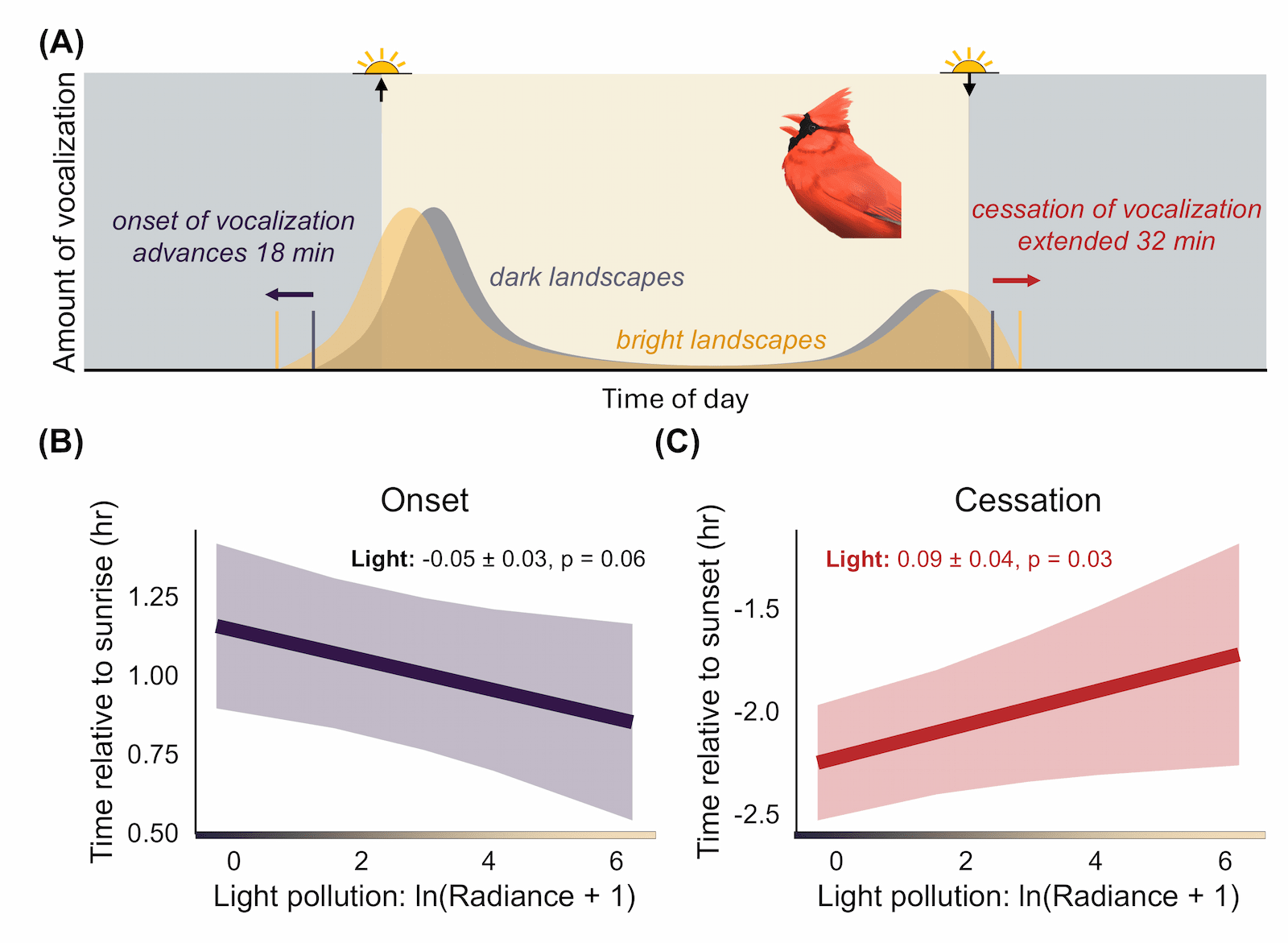
BirdWeather Citizen Science
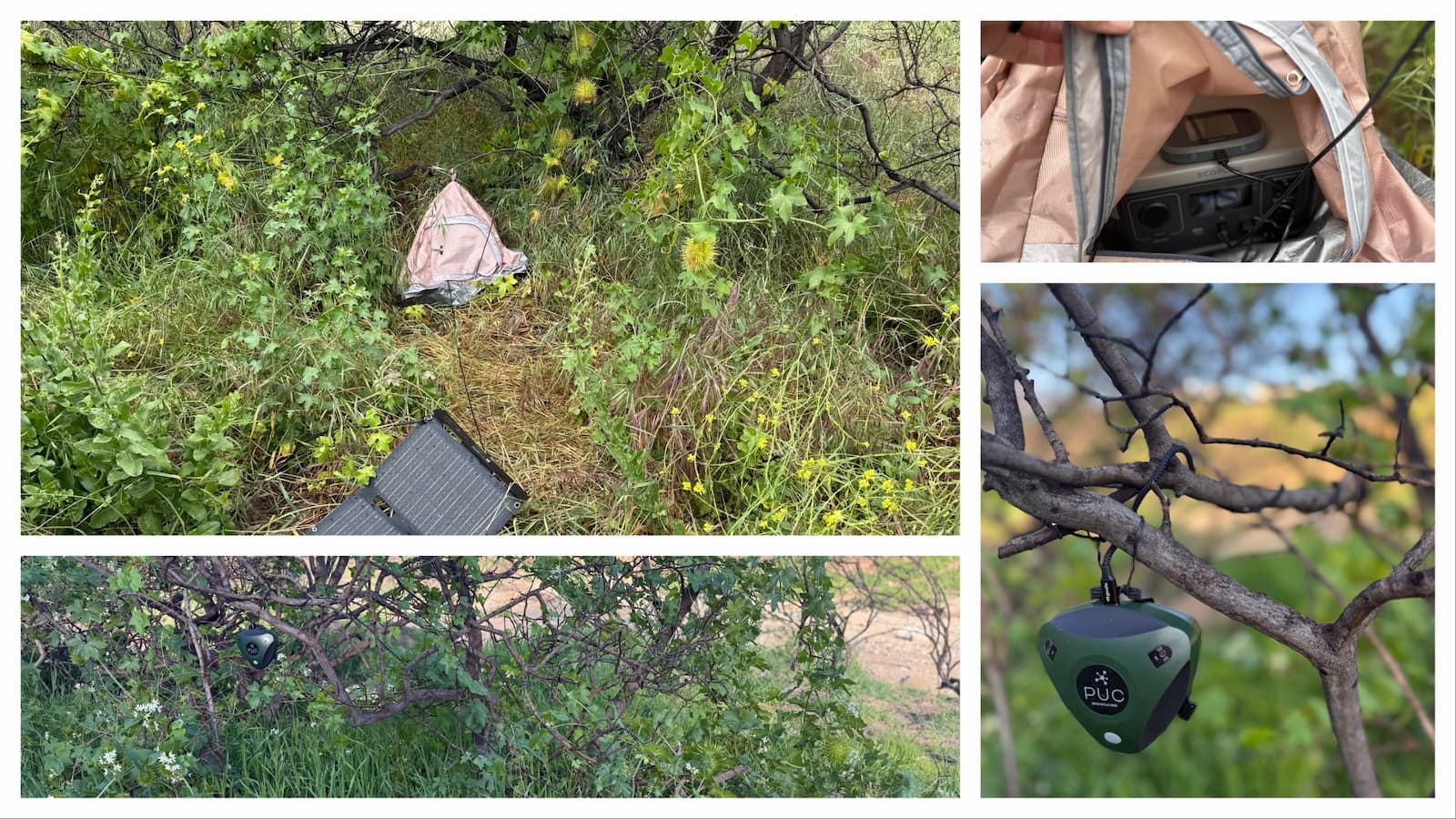
The Chaney Trail Corridor Project is an all-volunteer grassroots environmental organization tracking biological data in order to conserve open space in Altadena, California which was devastated by wildfire in January of 2025. The Project was using a PUC to record birds beginning in June of 2024 in the field using a repurposed e-bike battery and a wifi hotspot. After perfecting the set-up, 41,271 detections of birds were made, documenting 108 species in 2024. After the fire, the Project re-deployed a PUC in order to understand the differences in bird populations before and after the fire. Now set up with an ECOFLOW Portable Power Station RIVER 2 with 45W Solar Panel and wifi hotspot, kept safe inside a little waterproof tent made for pet cats, the new PUC set-up is going strong, with 68,914 detections so far after the fire. For more info. you can follow the project on Instagram at @chaney.trail.corridor
BirdWeather — Hyper-Local Habitat Change
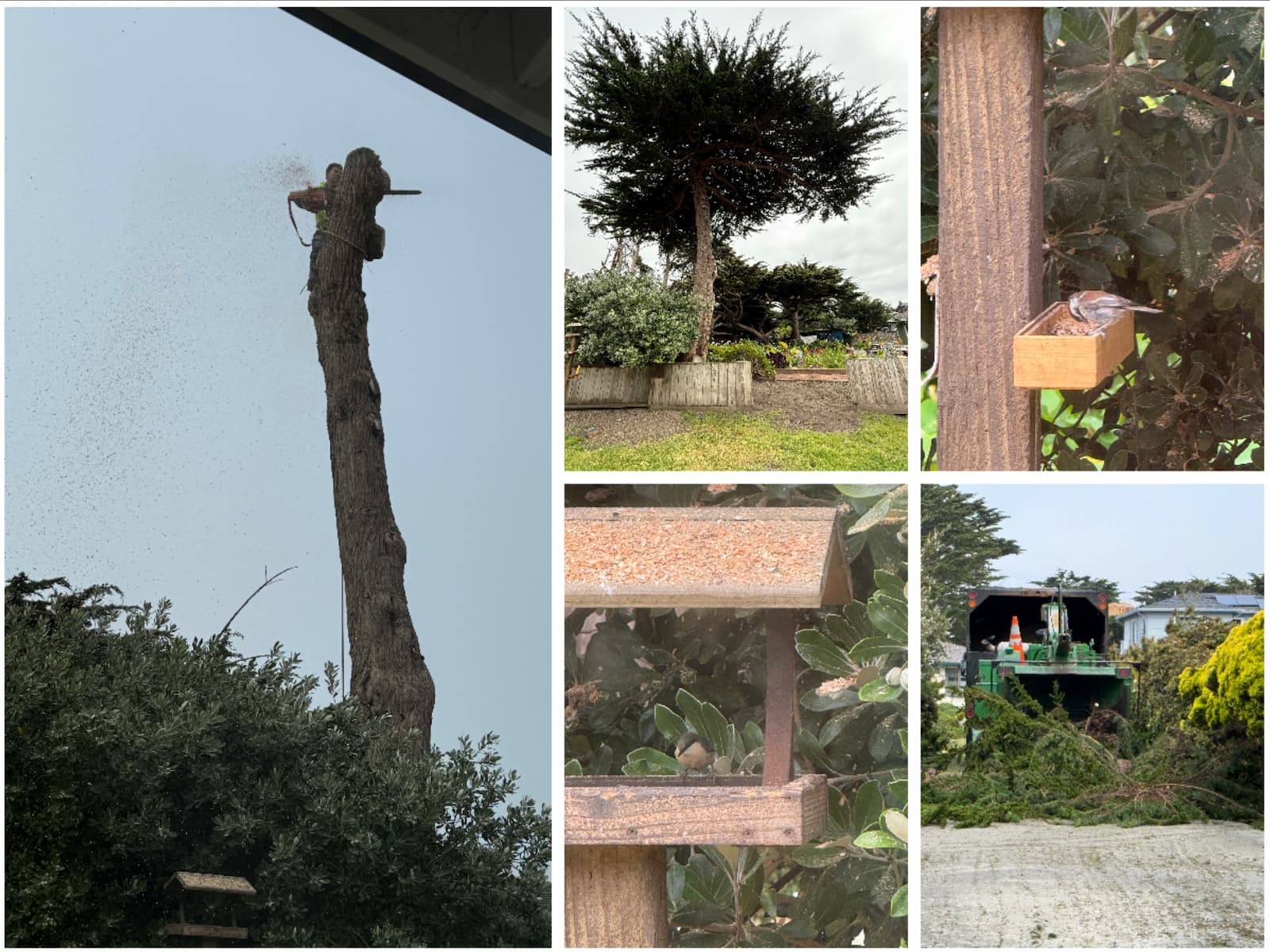
On May 8th, 2025 — a Cypress tree that was ~10ft from our bird feeder was removed from our Moss Beach backyard. Jenn and I were both concerned that some of our backyard visitors might wind up displaced, and that we’d see a drop in visitations, possibly even some species needing to find different homes.
The tree removal company was super efficient — with the entire process taking less than 4hrs. Which was good as our heartier ones were continuing to eat while sawdust was raining down from above!
I’m happy to say that our feathered bunch seems to have pretty quickly adapted to the change. I generated some before/after plots — and you can see some species even got more vocal! The Purple Finch spike the day before the tree removal was definitely real!
One of the benefits of having a PUC continuously listening year round — you can quantify change using real data.
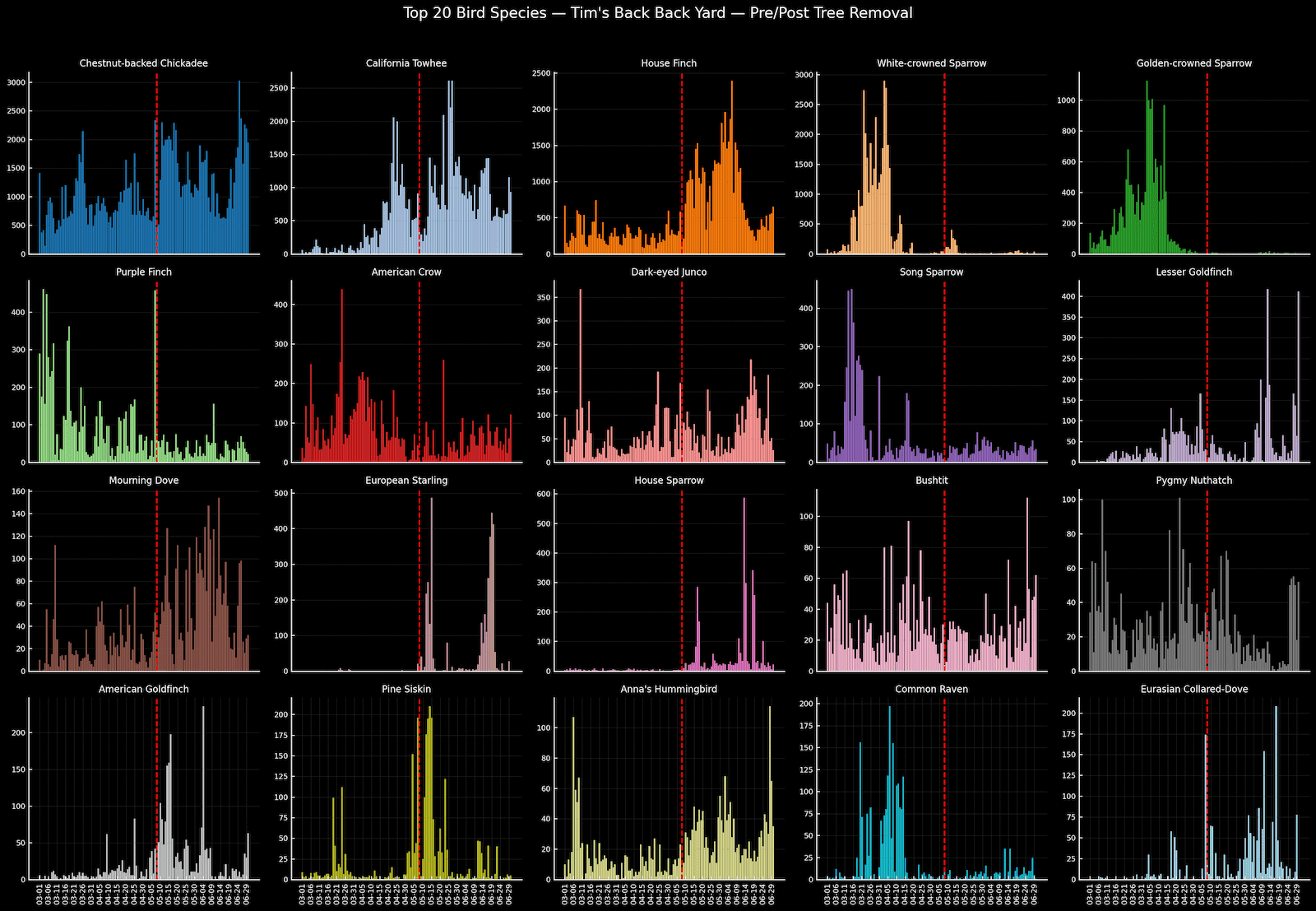
Community Visuals
Community Member — GeekNJ
I’ve been enjoying my BirdWeather PUC since its release and am an active member of the active community forum at community.birdweather.com. Some community members were looking for an easy way to view bird detections broken down by hour and thanks to the flexible interfaces provided by the BirdWeather platform, I created a web page that allows anyone to visualize hourly bird detections for their own PUC.
This view offers a snapshot of which species are detected throughout the day, how often, and when. After sharing it with the community, fellow users offered great feedback, which led to new features for customizing some display options and international language support. PUC owners can simply enter their station ID and tailor the settings to match their specific needs.
One community member even embedded the chart page into their website for an annual birding event that draws over 10,000 visitors.
https://levinecentral.com/birdweather/chart_top_species_by_hour.php?station=2028&topn=200&totals=top&locale=en_US
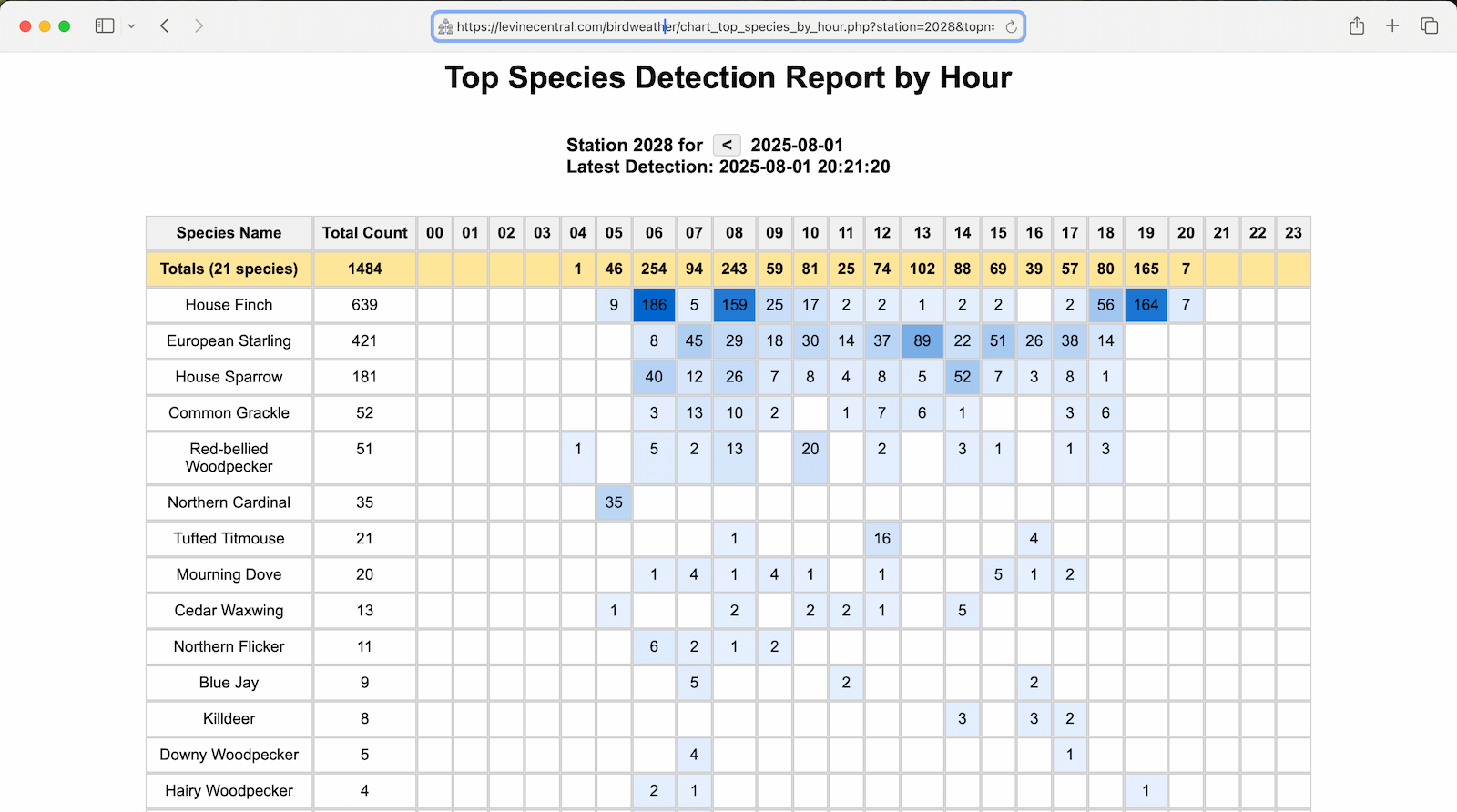
Community Member — spindelev
I recently got into the adventure and joy of detecting birds with BirdNet-Pi and BirdWeather.
For the fun of it I’ve created a custom view that gives me the data I’m most interested in at a glance, and it also works very well on mobile and small screens. Since others might think it’s useful, I’ve made it into a multi-lingual website and added support for any BirdWeather station id. Check it out at: https://birdtunes.net
You can select your own station and language on the site, or predefine them in the url for easy sharing or bookmarking. Example: https://birdtunes.net/?station=8588&lang=en
The site show a list of “Last heard”, “Most visits” as well as a search/filter for species. You can also listen to the last 5 audio clips for each species detected and read more on Wikipedia.
And a big thank you to BirdWeather for their open APIs.
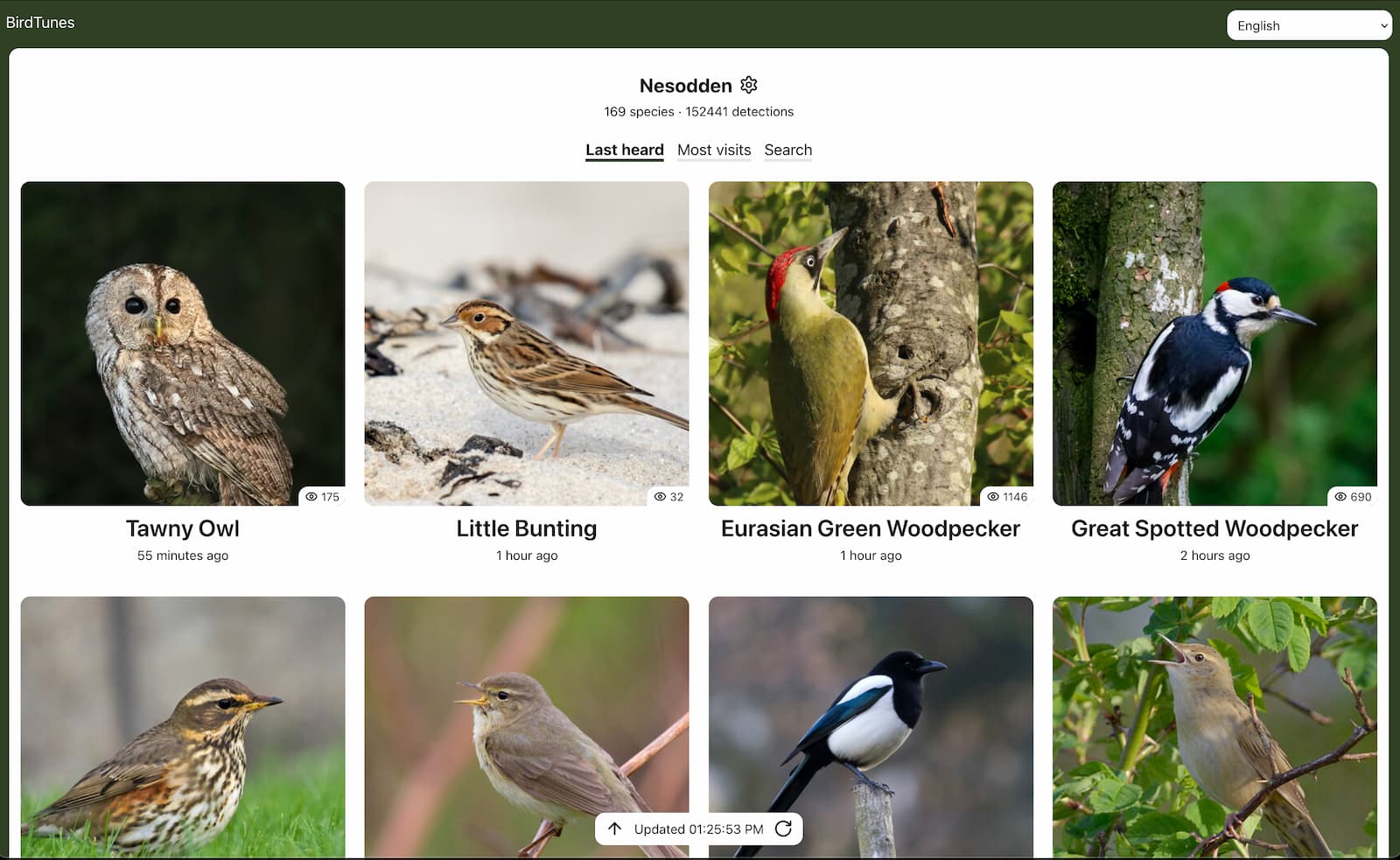
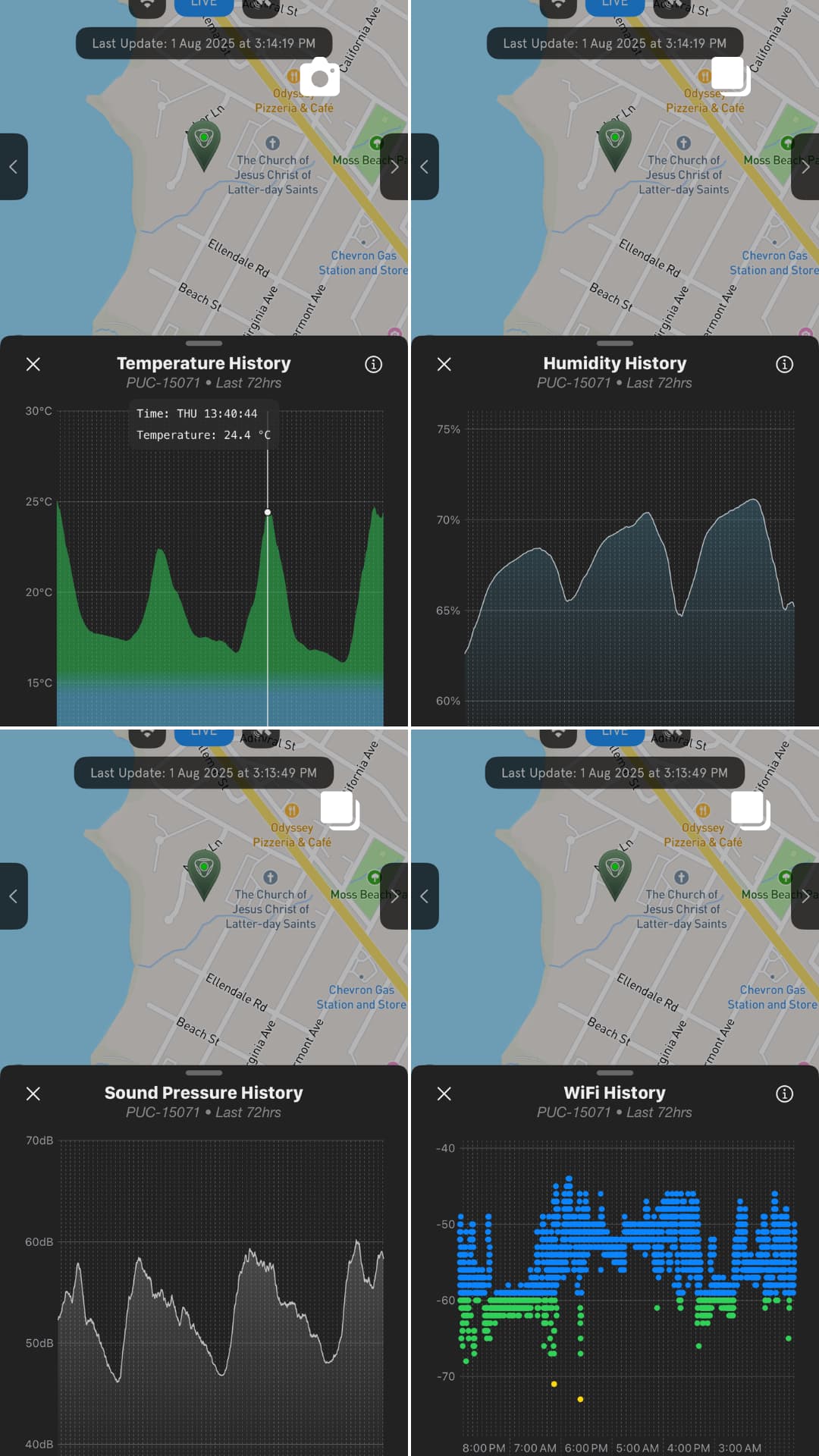
Mobile App Charts
A couple months back we added 72hr charts for a number of data points collected by the PUC — from Temperature to WiFi Signal Strength to Battery Level — you’re able to see what your PUC has been doing the past 3 days directly in the mobile app.
BirdNET-Pi — Soundscape Format Change
For those who may not be aware — on July 17, 2025 we began accepting only FLAC audio files. The default WAV format files were much, much larger, and by storing in FLAC format, there is no loss, but file sizes can be as much as 10x smaller. This helps us a lot on AWS S3 storage costs!
Please refer to the Discussion forum of the GitHub repository you originally installed from for guidance on how to get your detections displaying correctly again.
Our Summer Sale Starts Today — Save 20%
In celebration of my actually getting the newsletter out — for the next 50 orders — you can use the code PUC20 for a 20% discount on you order from birdweather.com — note that the sale is only for purchases placed on birdweather.com (US, Canada, and Australia) — for a limited time!
We can’t thank you all enough for the support you’ve given our little project. Join us in collecting as many sounds, from as many species, in as many locations as we can, while we can.
Thank You!
-Tim, Sam, Vitalii and Yurii (your BirdWeather team)







